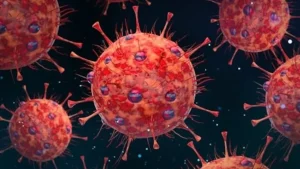Chinese researchers have identified a novel bat coronavirus, HKU5-CoV-2, which has the potential to jump from animals to humans. The discovery has sparked concerns about future spillover events, as the virus utilizes the same human receptor as SARS-CoV-2, the virus responsible for COVID-19.
The study, led by renowned virologist Shi Zhengli—often referred to as “batwoman” for her extensive work on bat coronaviruses—emphasizes the need for further research into HKU5-CoV-2’s potential for human transmission. While there are indications that the virus could infect humans, additional studies are required to assess the risk comprehensively.
A collaborative effort involving researchers from the Guangzhou Laboratory, Guangzhou Academy of Sciences, Wuhan University, and the Wuhan Institute of Virology, the findings were published in the peer-reviewed journal Cell on Tuesday. The study classifies HKU5-CoV-2 as part of the merbecovirus subgenus, which also includes the Middle East respiratory syndrome (MERS) virus. The newly identified virus is a distinct lineage of the HKU5 coronavirus, originally detected in Japanese pipistrelle bats in Hong Kong.
Researchers found that HKU5-CoV-2 can bind to the human angiotensin-converting enzyme 2 (ACE2) receptor—the same receptor used by SARS-CoV-2 to infect human cells. Notably, the virus also features a furin cleavage site, facilitating cell entry through ACE2, similar to SARS-CoV-2. Laboratory tests confirmed that HKU5-CoV-2 can effectively infect human cells with elevated ACE2 levels, including simulated intestinal and respiratory models.
However, the study notes that HKU5-CoV-2’s binding efficiency to human ACE2 is significantly lower than that of SARS-CoV-2.
“We report the discovery and isolation of a distinct lineage (lineage 2) of HKU5-CoV, which can utilize not only bat ACE2 but also human ACE2 and various mammalian ACE2 orthologs,” the researchers stated.
The World Health Organization (WHO) has classified merbecoviruses as emerging pathogens requiring pandemic preparedness. Shi Zhengli, a key figure in COVID-19 research, has refuted claims linking the Wuhan Institute of Virology to the pandemic’s origins. The origins of COVID-19 remain under investigation, with some studies suggesting it may have originated in bats and reached humans through an intermediary species.














